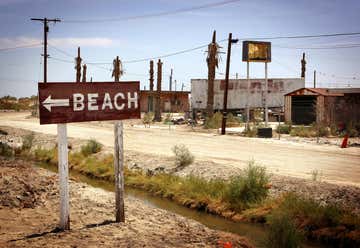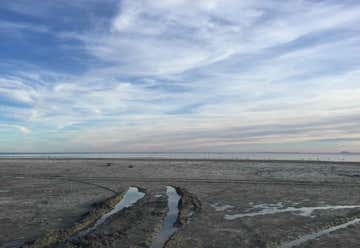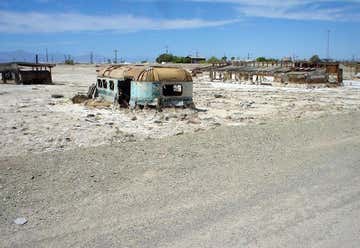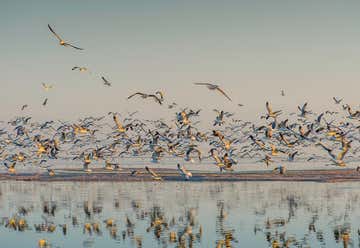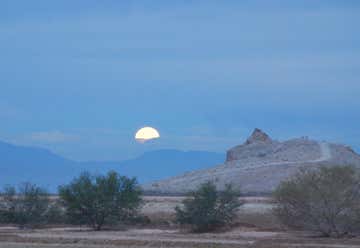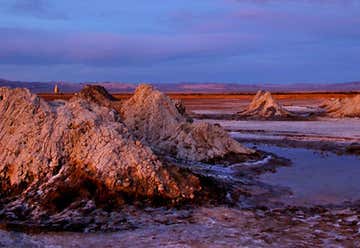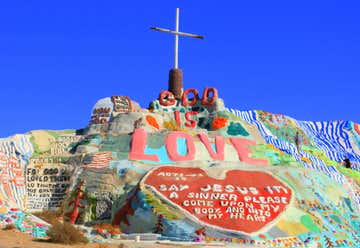The abandoned Salton Riviera and ruins of Bombay Beach were once a thriving resort community, just a few miles outside of Los Angeles. The ambitious development included 25,000 residential lots and over 250 miles of paved roads (along with electrical power, water and sewage). Today it’s a ghost town. And it smells really, really bad.
Salton City was developed in the 1950s and bordered the Salton Sea, which is “a saline, endorheic rift lake located directly on the San Andreas Fault.” However, due to its isolation and “lack of local employment opportunities” little development took place over the years. Initial designs for the resort included a business district, churches, a championship golf course, schools, and a luxury hotel/yacht club/marina.
The “Salton Riviera” (as the resort community came to be called) was an initial success, taking in over $4.25 million in lot sales in just its opening weekend. Politicians and Hollywood celebrities frequented the desert oasis, and it became one of California’s most popular recreation retreats. However, most of the lots that were purchased were for investment and few were developed.
The resort community collapsed towards the end of the 1970s. Buildings were abandoned as the sea level rose and throughout the 1980s and 1990s, salinity and pollution levels in the Salton Sea increased-- it doesn't drain anywhere, and pesticides and other remnants from human settlement along the shores washed into the lake, poisoning and killing the fish population. If you visit the Salton Riviera today, you’ll still see the haunting abandoned remnants of once thriving beach town. Just beware, the stench from the pollution and rotting fish corpses can be quite pungent.
Bombay Beach is one of the resort towns that suffered the effects of the pollution in the water. However, it's still managed to keep from turning entirely into a ghost town... as of 2010, it had a population of nearly 300. That being said, the town is surrounded by abandoned resort buildings and even more homes and businesses in the west part of Bombay Beach are submerged or half-buried in mud and water. It's a crazy place to explore and take some pictures. Tips: the nearest gas station is 20 miles away, so top off your tank. If you need a drink, there's one bar in town: the Ski Inn.
The sand at this beach is pretty unique-- it's made of bones! They're mostly fish and bird bones, which washed ashore after dying in the toxic lake water.
This little corner of the lake is known as the Salton Sea State Recreation Area. Stop by here for the great historical and environmental displays at the visitor center and the easy access to the beach. If you're looking to fish (which you can still do in the lake) or just kayak on the water, this is a great place to start. You can also camp here! Sure, the shores here are very different from, say, the beaches in LA, but they're still a fascinating spot to visit.
The southern end of the park is home to the Sonny Bono Salton Sea National Wildlife Refuge, which is working to restore, preserve, and protect the natural habitat of the lake and surrounding wetlands. Birds and fish call this oasis in the Sonoran Desert home, and, as a Congressman, Sonny Bono did a ton of work to save the Salton Sea so
As if beaches made of bones and abandoned retro resorts weren't enough, they have mud volcanoes too! The Salton Sea lies on the end of the San Andreas Fault, and the geothermal activity below the Earth's surface causes mud to bubble up from the ground here. On a good day, you can see a proper eruption, but generally the mud is just bubbling and hissing... it really does add to the post-apocalyptic feel of the Salton Sea, though
The region isn't totally devoid of life... a visit to Salvation Mountain is proof that there's still big things happening. Salvation Mountain is a folk art mecca. The main feature here is the mountain itself, a series of clay hills brightly painted with positive (and sometimes bizarre) messages. But lots of artists live here, and at nearby Slab City, so make sure to thoroughly explore the landscape here for all kinds of weird art.
Luckily, you can escape the post-apocalyptic wasteland back to the comforts of reality. Palm Springs is about an hour and a half away, and Joshua Tree National Park is even closer, and both make for cozy places to set up your home base for exploring the area.
Roadtrippers
Roadtrippers helps you find the most epic destinations and detours—from roadside attractions to natural wonders and beyond.

